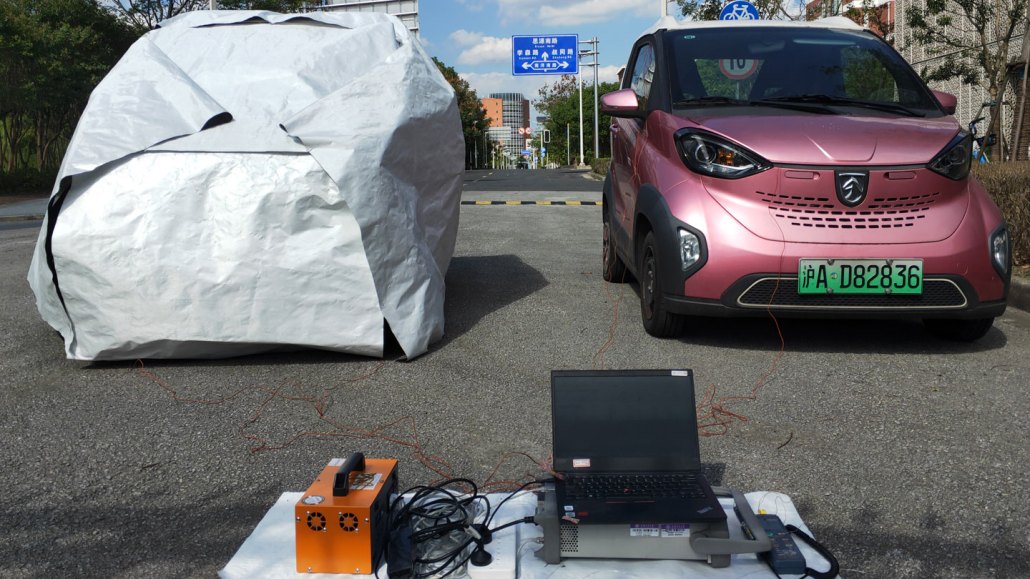Questions for ‘New thermal ‘cloak’ keeps spaces from getting too hot or too cold’

The prototype fabric draped over the electric vehicle at left kept its inside temps up to 28 degrees Celsius (50 degrees Fahrenheit) cooler than the same-model uncovered car (right) on a summer day in Shanghai, China.
Huaxu Qiao
Share this:
- Share via email (Opens in new window) Email
- Click to share on Facebook (Opens in new window) Facebook
- Click to share on X (Opens in new window) X
- Click to share on Pinterest (Opens in new window) Pinterest
- Click to share on Reddit (Opens in new window) Reddit
- Share to Google Classroom (Opens in new window) Google Classroom
- Click to print (Opens in new window) Print
To accompany ‘New thermal ‘cloak’ keeps spaces from getting too hot or too cold’
SCIENCE
Before Reading
- Consider the types of things in a typical home that run on electricity. List three major categories of such products. Which of these categories do you think consumes the most energy in a typical home? To what extent does this consumption change with the season or over the course of a year? Explain your answer.
- Imagine two dark blue cars on a hot summer day. One car sits in the shade. The second sits in the sun. You place your hand on each car’s hood. Do you predict the sunny car’s hood will feel hotter, cooler or equal to the temperature of the shaded car’s hood? Identify one environmental variable that differs between the two cars. Identify one factor that is the same. To what extent did the differing factor affect your prediction? Explain your answer.
During Reading
- What characteristics of the new device might help reduce a home’s energy use? Globally, what percent of total energy consumption goes to heating and cooling?
- According to Aaswath Raman, would using this new device be likely to increase, decrease or have no effect on levels of carbon dioxide emissions? Why or why not?
- The cloak is made of two layers. How does the outer layer interact with light to keep the space underneath it cool?
- What two materials make up the outer layer? Identify the type of light that each material interacts with.
- What material makes up the inner layer? Explain how that material contributes to the cloak’s function.
- Under what “extreme conditions” did the researchers test their new material? Provide a measurement of one test condition.
- Describe one way that researchers tested the performance of the full-size prototype. Identify one city in which such investigations took place. How did temperatures inside the cloaked car compare to those outside of it? How did temperatures inside the cloaked car compare to those inside the non-cloaked car? Give your answers in degrees Celsius.
After Reading
- What color is the outer layer of this fabric? To what extent do you think the fabric’s color contributes to its function? If the fabric was navy blue, would it work better, worse or the same? Explain your reasoning.
- Based on the information in this story, identify one variable the researchers controlled (did not allow to change) between the cars in their Shanghai study. Now consider other variables that if not controlled might affect study results. Write down one variable the researchers may or may not have controlled (but that you can’t tell from the information given). In one sentence, explain how this variable could affect the outcome of this study.